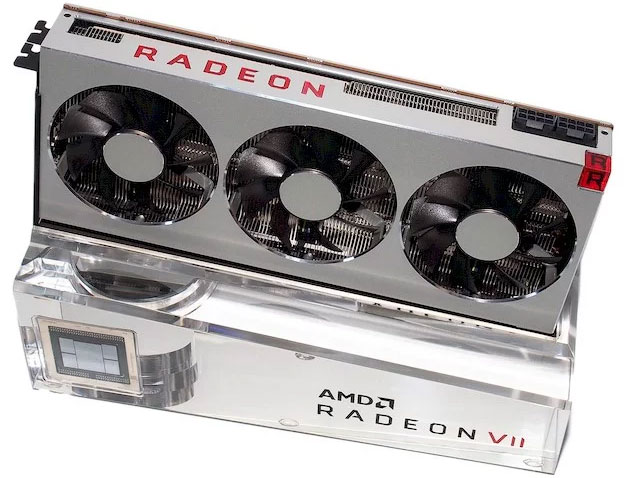AMD Sees Radeon VII's 16GB HBM2 As Essential Gift To 4K Gaming

At long last, the Radeon VII is here, it has been reviewed and benchmarked (be sure to check out our own hands-on analysis), and it is now up to consumers to pull the trigger or take a pass. One of the selling points is that the Radeon VII has 16GB of HBM2 memory. Is it overkill? Not according to AMD, which believes the generous allocation of memory gives the card some future proofing.
Of course, honest-to-goodness future proofing is unattainable. That's not the point, however. AMD decided to design and build a card that is simultaneously attractive to gamers and professionals alike, and is pitching the excess memory (compared to 8GB cards) giving the Radeon VII some legs.
"This new GPU is meant to handle some of the most demanding new workloads that gamers and content creators can throw at it.
Content creation professionals will appreciate how the Radeon VII's 16GB of VRAM capacity frees them to manipulate exceptionally high-quality assets, like 4K and 8K video, while using their traditional tool chains," AMD explains.
To give an example, AMD provided a couple of metrics from running Adobe Premiere. In AMD's 4K video encoding test, Adobe Premiere chewed up 10.2GB of video memory, and at 8K, it consumed 11.5GB.
"Of course, every workload is different. Video formats continue to evolve with support for higher pixel counts, HDR, wide color gamuts, and high frame rates. Other content formats are growing their fidelity in response. Creative professionals will know their data sets and understand where Radeon VII 16GB of VRAM can improve their workflows," AMD says.
What about games? AMD points out that several existing titles can already exceed 8GB of memory at their highest video quality settings. Some examples (taken by AMD's internal testing):
- Call of Duty: Black Ops 4: 11.9GB
- Far Cry 5: 12.9GB
- Rise of the Tomb Raider: 9.8GB
- Star Control Origins: 9.3GB
- Resident Evil 2: 8.8GB
- Tom Clancy's Ghost Recon Wildlands: 8.2GB
This was tested and recorded on a system equipped with an Intel Core i7-7700K processor, 16GB of DDR4-3000 RAM, and a Radeon VII with AMD's older 18.5 driver, and Windows 10.
In a blog post on the topic, AMD goes on to explain that memory allocation at any given moment in time is only part of the story.
"Applications sometimes fail to let go of bits they’re no longer actively using, so indicated usage exceeding your video card’s VRAM capacity doesn’t always lead to obvious complications. When a system does run up against a VRAM limit in practice, though, the result can be severe slowdowns or even instability," AMD says.

Source: AMD
It's an interesting read (hit the source link in the Via field below), and AMD provides examples of framerates spiking and fluctuating on a GeForce RTX 2080, which is the main competitor to the Radeon VII, while staying relatively stable on AMD's newest GPU.
In our own testing, the Radeon VII generally trails the GeForce RTX 2080 overall by a few frames per second in most games. Performance is comparable for the most part, as is the price—both carry a $699 MSRP.
The differences come down to real-time ray tracing and DLSS support on the GeForce RTX 2080, and more memory on the Radeon VII. It's not surprising to see AMD dedicate a blog post to extolling the benefits of more memory, as it hopes that will be a deciding factor for gamers who are in the market for a high-end GPU. Whether that ultimately proves true or not, time will tell.


